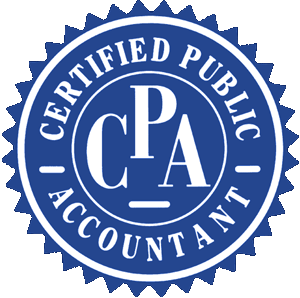Your cart is currently empty!
Mastering the CPA Exam: Effective Strategies for Testbank Study

Preparing for the Certified Public Accountant (CPA) exam is a rigorous process that demands dedication, strategic planning, and effective study tools. One of the most vital resources available to aspiring CPAs is the CPA testbank. This comprehensive collection of practice questions, spanning all areas of the exam, is indispensable for mastering the material and achieving exam success. In this article, we will delve into the importance of the CPA testbank, effective study strategies, how to organize your study schedule around the testbank, and the benefits of utilizing practice questions to enhance retention.
Understanding the Importance of the CPA Testbank
The CPA testbank is a treasure trove of practice questions that cover the breadth and depth of the CPA exam content. It provides candidates with a realistic sense of the types of questions they will encounter on the actual exam. By familiarizing themselves with the format and complexity of these questions, candidates can reduce anxiety and feel more prepared on test day. The testbank allows for repeated exposure to key concepts, reinforcing knowledge and improving recall.
Moreover, the testbank is curated to reflect the latest changes and updates in the CPA exam syllabus. This ensures that candidates are studying the most current and relevant material. As the CPA exam evolves, so too does the testbank, making it a dynamic and up-to-date tool for exam preparation. This alignment with the exam’s content and structure is crucial for effective study.
Another significant advantage of the CPA testbank is its ability to highlight areas of weakness. By repeatedly practicing questions and reviewing explanations, candidates can identify which topics require further study. This targeted approach to learning helps to optimize study time and ensures that candidates are focusing on areas that will yield the greatest improvements in their scores.
The testbank also serves as a benchmark for progress. By tracking performance over time, candidates can measure their improvement and adjust their study strategies accordingly. This feedback loop is essential for maintaining motivation and ensuring that study efforts are paying off.
In addition, the testbank offers a variety of question types, including multiple-choice, task-based simulations, and written communication tasks. This variety ensures that candidates are well-prepared for all aspects of the CPA exam, not just the multiple-choice questions that many may be more familiar with.
Finally, the CPA testbank provides a convenient and flexible study tool. Whether studying at home, in a library, or on the go, candidates can access the testbank anytime and anywhere. This flexibility is particularly beneficial for those balancing study with work or other commitments.
Effective Study Strategies for CPA Exam Success
Effective study strategies are essential for CPA exam success, and the CPA testbank plays a central role in these strategies. One effective approach is to begin by taking a diagnostic test from the testbank to assess your current knowledge level. This will help you identify your strengths and weaknesses and tailor your study plan accordingly.
Active learning is another effective strategy. Rather than passively reading textbooks or notes, engage with the material by answering questions from the testbank. This active engagement helps to reinforce learning and improve retention. Additionally, reviewing explanations for both correct and incorrect answers can provide deeper insights into the material.
Time management is crucial when preparing for the CPA exam. Create a study schedule that allocates specific times for different sections of the testbank. This structured approach ensures that you cover all areas of the exam and avoid cramming at the last minute. Consistent, daily practice with the testbank can lead to steady progress and build confidence over time.
Incorporate a mix of study methods to keep your preparation dynamic and engaging. For example, use the CPA testbank for practice questions, but also engage in group study sessions, watch video tutorials, and attend review courses. This variety can help to maintain interest and prevent burnout.
It’s also important to simulate exam conditions when using the testbank. Time yourself while answering questions to get accustomed to the pressure of the actual exam. This practice can help improve your time management skills and ensure that you can complete the exam within the allotted time.
Finally, don’t forget to take care of your physical and mental well-being. Regular breaks, a healthy diet, exercise, and adequate sleep are all important factors that can affect your study performance. A well-rounded approach that includes these elements will help you stay focused and energized throughout your preparation.
Organizing Your Study Schedule Around the Testbank
Organizing your study schedule around the CPA testbank is a strategic approach that can lead to efficient and effective exam preparation. Start by mapping out a comprehensive study plan that spans several months, breaking down the content into manageable sections. Allocate specific time slots for each section of the testbank to ensure thorough coverage of all exam areas.
Begin with a broad overview of the CPA exam content and then drill down into specific topics using the testbank. For example, dedicate the first few weeks to understanding the fundamentals of each exam section, and then use the testbank to practice questions related to those topics. This phased approach helps build a strong foundation before diving into more complex material.
Set realistic and achievable goals for each study session. For instance, aim to complete a certain number of questions from the testbank each day or week. These goals will keep you on track and provide a sense of accomplishment as you progress. Regularly review and adjust your study plan based on your performance in the testbank to ensure continuous improvement.
Incorporate review sessions into your study schedule. Periodically revisit questions you previously answered incorrectly or found challenging. This reinforcement helps to solidify your understanding and prevent knowledge gaps. The CPA testbank’s tracking features can be particularly useful for identifying areas that need additional review.
Balance your study schedule to avoid burnout. While it’s important to dedicate sufficient time to each section of the testbank, it’s also crucial to take breaks and allow for rest. A balanced schedule that includes downtime can help maintain motivation and prevent fatigue, leading to more effective study sessions.
Lastly, stay flexible and adaptable. Life can be unpredictable, and it’s important to adjust your study schedule as needed. If you fall behind or encounter unexpected challenges, don’t be discouraged. Use the CPA testbank to refocus your efforts and get back on track. The key is to maintain a consistent and disciplined approach, even when faced with obstacles.
Utilizing Practice Questions to Enhance Retention
Utilizing practice questions from the CPA testbank is one of the most effective ways to enhance retention and ensure a deep understanding of the material. Practice questions provide active engagement with the content, which is far more effective for retention than passive reading or listening. When you actively work through questions, you are forced to recall information, apply concepts, and think critically, all of which reinforce learning.
One of the primary benefits of practice questions is the immediate feedback they provide. After answering a question, review the explanation provided in the testbank, regardless of whether you got the question right or wrong. This feedback helps to clarify misunderstandings and reinforce correct knowledge, making it easier to remember the information in the future.
Repetition is key to retention, and the CPA testbank allows for repeated practice with a wide variety of questions. By regularly working through practice questions, you reinforce your understanding and improve your ability to recall information under exam conditions. This repetition builds confidence and reduces anxiety, making you more comfortable on test day.
Practice questions also help to develop problem-solving skills. The CPA exam is not just about memorizing facts; it requires the ability to apply knowledge to different scenarios. By working through a diverse set of questions in the testbank, you can develop the critical thinking and analytical skills needed to tackle the exam’s complex problems.
Using practice questions can also help to improve time management skills. The CPA exam is timed, and it’s important to be able to work through questions efficiently. By timing yourself while using the testbank, you can practice pacing yourself and develop strategies for managing your time effectively during the actual exam.
Finally, practice questions can help to identify patterns and common themes in the exam. By working through the testbank, you may start to notice recurring topics or question formats. Recognizing these patterns can help you anticipate what to expect on the exam and tailor your study strategies accordingly.
In conclusion, preparing for the CPA exam requires a strategic approach, and the CPA testbank is an invaluable resource in this journey. By understanding the importance of the testbank, implementing effective study strategies, organizing a structured study schedule, and utilizing practice questions to enhance retention, candidates can significantly improve their chances of success. The CPA testbank provides a comprehensive and flexible tool that can adapt to individual needs and learning styles, making it an essential component of any CPA exam preparation plan. With dedication, discipline, and the right resources, achieving CPA certification is within reach.
